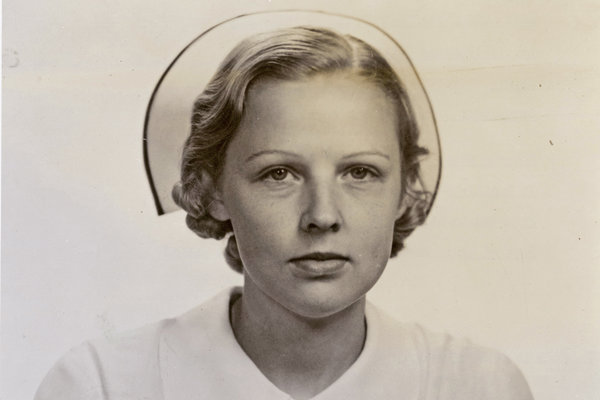You are at your daughter’s recital and you get a call that your elderly patient’s son needs to talk to you urgently. A colleague has a family emergency and the hospital needs you to work a double shift. Your patient’s M.R.I. isn’t covered and the only option is for you to call the insurance company and argue it out. You’re only allotted 15 minutes for a visit, but your patient’s medical needs require 45.
These quandaries are standard issue for doctors and nurses. Luckily, the response is usually standard issue as well: An overwhelming majority do the right thing for their patients, even at a high personal cost.
It is true that health care has become corporatized to an almost unrecognizable degree. But it is also true that most clinicians remain committed to the ethics that brought them into the field in the first place. This makes the hospital an inspiring place to work.
Increasingly, though, I’ve come to the uncomfortable realization that this ethic that I hold so dear is being cynically manipulated. By now, corporate medicine has milked just about all the “efficiency” it can out of the system. With mergers and streamlining, it has pushed the productivity numbers about as far as they can go. But one resource that seems endless — and free — is the professional ethic of medical staff members.
This ethic holds the entire enterprise together. If doctors and nurses clocked out when their paid hours were finished, the effect on patients would be calamitous. Doctors and nurses know this, which is why they don’t shirk. The system knows it, too, and takes advantage.
The demands on medical professionals have escalated relentlessly in the past few decades, without a commensurate expansion of time and resources. For starters, patients are sicker these days. The medical complexity per patient — the number and severity of chronic conditions — has steadily increased, meaning that medical encounters are becoming ever more involved. They typically include more illnesses to treat, more medications to administer, more complications to handle — all in the same-length office or hospital visit.
By far the biggest culprit of the mushrooming workload is the electronic medical record, or E.M.R. It has burrowed its tentacles into every aspect of the health care system.
There are many salutary aspects of the E.M.R., and no one wants to go back to the old days of chasing down lost charts and deciphering inscrutable handwriting. But the data entry is mind-numbing and voluminous. Primary-care doctors spend nearly two hours typing into the E.M.R. for every one hour of direct patient care. Most of us are now putting in hours of additional time each day for the same number of patients.
In a factory, if 30 percent more items were suddenly dropped onto an assembly line, the process would grind to a halt. Imagine a plumber or a lawyer doing 30 percent more work without billing for it. But in health care there is a wondrous elasticity — you can keep adding work and magically it all somehow gets done. The nurse won’t take a lunch break if the ward is short of staff members. The doctor will “squeeze in” the extra patients.
The E.M.R. is now “conveniently available” to log into from home. Many of my colleagues devote their weekends and evenings to the spillover work. They feel they can’t sign off until they’ve documented all the critical details of their patients’ complex medical histories, followed up on all the test results, sorted out all the medication inconsistencies, and responded to all the calls and messages from patients. This does not even include the hours of compliance modules, annual mandates and administrative requirements that they are expected to complete “between patients.”
For most doctors and nurses, it is unthinkable to walk away without completing your work because dropping the ball could endanger your patients. I stop short of accusing the system of drawing up a premeditated business plan to manipulate medical professionalism into free labor. Rather, I see it as a result of administrative creep. One additional task after another is piled onto the clinical staff members, who can’t — and won’t — say no. Patients keep getting their medications and their surgeries and their office visits. From an administrative perspective, all seems to be purring along just fine.
But it’s not fine. This month the World Health Organization recognized the serious effects of burnout from chronic workplace stress. Burnout levels among doctors are at new highs, far worse than among the general population, and increasing relentlessly. Burnout among nurses is similarly rising and is highest among those on the front line of patient care. Doctors and nurses commit suicide at higher rates than in almost any other profession. Higher levels of burnout are also associated with more medical errors and compromised patient safety.
This status quo is not sustainable — not for medical professionals and not for our patients.
Mission statements for health care systems and hospitals are replete with terms like “excellence,” “high-quality” and “commitment.” While these may sound like Madison Avenue buzzwords on a slick brochure, they represent the core values of the people who labor in these institutions. Health care is by no means perfect, but what good exists is because of individuals who strive to do the right thing.
It is this very ethic that is being exploited every day to keep the enterprise afloat.
The health care system needs to be restructured to reflect the realities of patient care. From 1975 to 2010, the number of health care administrators increased 3,200 percent. There are now roughly 10 administrators for every doctor. If we converted even half of those salary lines to additional nurses and doctors, we might have enough clinical staff members to handle the work. Health care is about taking care of patients, not paperwork.
Those at the top need to think about the ramifications of their decisions. Counting on nurses and doctors to suck it up because you know they won’t walk away from their patients is not just bad strategy. It’s bad medicine.
Danielle Ofri, a physician at Bellevue Hospital and New York University, is the author of “What Patients Say, What Doctors Hear.”
The Times is committed to publishing a diversity of letters to the editor. We’d like to hear what you think about this or any of our articles. Here are some tips. And here’s our email: letters@nytimes.com.
Follow The New York Times Opinion section on Facebook, Twitter (@NYTopinion) and Instagram.



